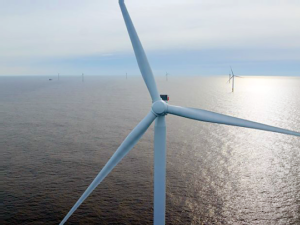- Saudi Arabia plans to raise domestic gasoline and jet fuel prices in January, part of a program to gradually eliminate energy subsidies as the kingdom seeks to overhaul its economy and balance the budget, according to a person with knowledge of the matter.
- Cushing, Oklahoma crude inventories decreased 2.5 million barrels last week, according to a forecast compiled bu Bloomberg.
- Goldman Sachs Group Inc. said Lower-48 U.S. crude-oil production will grow by 280,000 barrels a day in the fourth quarter from the third.
Brent Reaches Highest Since 2015 After Forties Pipeline Shutdown
By: | Dec 11 2017 at 11:35 AM
Brent crude in London reached its highest since 2015 as a key North Sea pipeline shut down.
The Forties Pipeline System, one of the most important oil conduits in the world, is to be fully halted after a crack was discovered, the link’s operator Ineos said. The announcement boosted pricing that had been largely muted over the last week following an OPEC-led agreement by major producers to extend output curbs through the end of 2018. The Brent rally pulled New York futures up near $58 a barrel.
At the same time, the U.A.E.’s energy minister said Monday the group may draft a strategy in June to end the curbs if the market is no longer oversupplied. Brent, the global benchmark, rose as high as $64.71 a barrel while West Texas Intermediate climbed to as high as $57.86 a barrel.
“Brent is ripping,” said Bob Yawger, director of futures at Mizuho Securities USA Inc. in New York. “You really don’t have a lot of spare barrels before the supply situation becomes a problem.”
In addition, the WTI-Brent spread will “widen and encourage U.S. exports,” he said.
The pipeline system feeds crude to the Hound Point export terminal near Edinburgh in Scotland. At over 400,000 barrels a day, the supplies that flow through the link are the single largest constituent part of the Dated Brent grade that helps to settle more than half the world’s physical oil prices.
Brent for February settlement gained 99 cents to $64.39 a barrel on the London-based ICE Futures Europe exchange. The global benchmark traded at a premium of $6.60 to February West Texas Intermediate, after touching $6.88.
OPEC may draft a strategy in June to end the curbs if the market is no longer oversupplied by then, the U.A.E.’s energy minister said Monday. Kuwait’s oil minister said Sunday that the group’s reduction-cuts may end earlier than 2019 if the market re-balances by June, signaling an optimistic outlook on market conditions next year.
There is the “expectation of tighter markets as 2018 unfolds,” Bart Melek, head of global commodity strategy at TD Securities in Toronto, said by telephone. “Certainly at Vienna, they’ve implied that they will be flexible. If the market rebalances, then we would expect somewhat looser rules.”
WTI for January delivery rose 36 cents to $57.72 a barrel at 11:27 a.m. on the New York Mercantile Exchange. Total volume traded was about 11 percent below the 100-day average. Prices received a boost earlier as news broke of an explosion in New York.
See: U.S. drillers signal 2018 growth spike as hedging surge surfaces
Russia is keen to end output cuts as early as possible, Issam Almarzooq, the Kuwaiti oil minister who was replaced on Monday, said in Kuwait City on Sunday. OPEC will study an exit strategy at its next meeting in June, and prices should remain near current levels in 2018, Almarzooq said.
Oil-market news:








